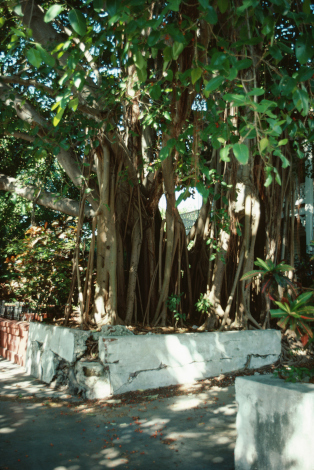
Figs have a long history, tracing back to 5000 BC and are mentioned many times in the Bible and historical documents. The Fig originated in the Middle East and was well known to the ancient Egyptians. It is one of the most popular fruits in the Mediterranean and was brought to the Americas by early missionaries in the 16th century.
Today there are hundreds of varieties of figs; in the twentieth century many of these varieties were brought to the USA by immigrants from fig growing regions. It is very common to spot a fig tree growing in Italian, Greek, Middle Eastern, and Portuguese neighborhoods. I have a collection of over 200 varieties that are being evaluated in my Pennsylvania climate.
Figs are Sub-Tropical trees, but when fully dormant, the stems are hardy to about 12° F. However, the roots are very hardy and have been grown outside in zone 5 with winter protection. Here in the Northeast and specifically in Pennsylvania, without protection the soft branches on the fig tree will die but will sprout back the following season. But re-growth from the root may hinder ripening times, since all the nutrition and energy is spent producing the stems.
There are many methods for protecting fig trees in the winter season. If it is grown in ground, the fig tree can be wrapped with an old carpet then covered with a plastic tarp. Trees need to be wrapped around Thanksgiving and unwrapped in April. It’s important to wrap the tree before it gets too cold but not while it still warm, and to un-wrap the trees before it gets too warm. Otherwise, the tree will run the risk of getting moldy.
Container grown trees will need to be brought to a cold storage area such as a garage, barn or a basement. If you have a greenhouse, you can bring the fig tree in to finish ripening its crop. You can also get a head start while growing the figs in the greenhouse. I usually bring the late bearing varieties into the greenhouse which extends my fig harvest into Christmas. They like to go dormant in winter, so it is best to keep the figs in a cool greenhouse where temperatures can be as low as 35°F.
Aside from winter protection fig trees are mostly carefree. The only pests that may present problems are birds, and fig-loving family members who may get to the delicious fruit before I do. I still end up with lots of fruit that I enjoy eating with the harvest starting in August and lasting into October. In the wintertime, I’m reminded of my savory figs when I eat Fig jam made from my own grown figs.
Bass Samaan is the owner of Trees of Joy. You can review many fig varieties at Treesofjoy.com.
Related Articles & Free Email Newsletter
Proper Planting Instructions for Trees and Shrubs
Understanding Stressed Trees: Insects, Disease & Environment



Comment here